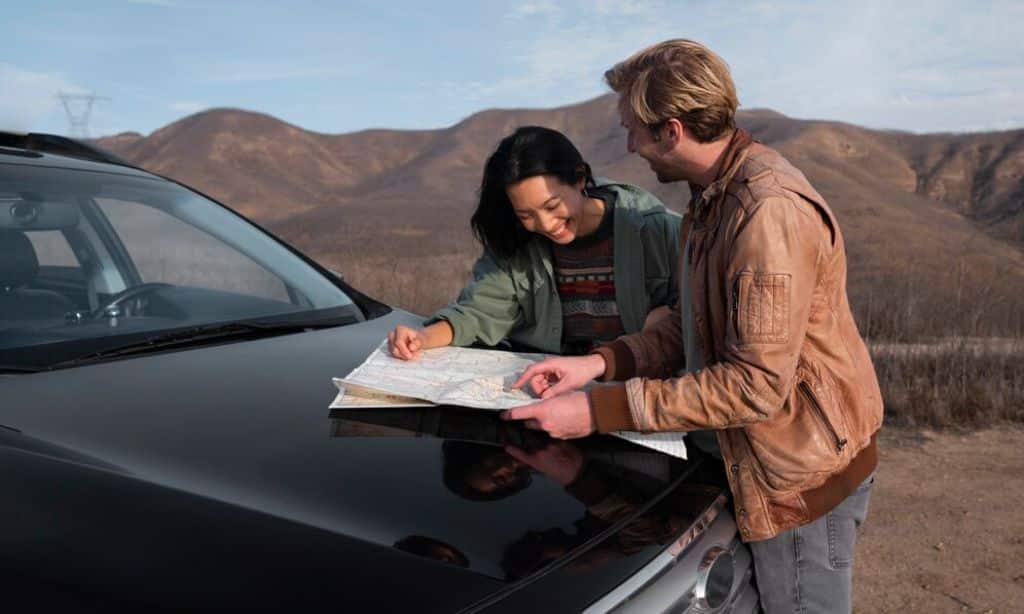There’s a unique charm to road trips—the sense of freedom, the excitement of discovering new places, and the thrill of the journey itself. Whether it’s a weekend getaway, a cross-country adventure, or an international road trip, the open road invites travelers to create memories that last a lifetime.
But to ensure your road trip goes smoothly, preparation is key. Poor planning can lead to missed opportunities, unexpected expenses, and even safety concerns. That’s why we’ve put together this comprehensive guide to help you plan the perfect road trip. These seven tips cover everything from route selection to budgeting and safety, ensuring that your adventure is as enjoyable and stress-free as possible.
Whether you’re traveling solo, with friends, or with family, this guide is packed with valuable advice to help you hit the road with confidence.
1. Choose the Right Route
The journey is just as important as the destination on a road trip. Choosing a route that aligns with your interests and travel goals sets the tone for your entire trip.
Factors to Consider When Choosing a Route:
- Type of Trip: Are you looking for a scenic drive, cultural experiences, or a quick route to a specific destination?
- Time Constraints: If you have limited time, prioritize direct routes with fewer stops. For leisurely trips, explore scenic byways and backroads.
- Season and Weather: Plan routes that are safe and accessible during your travel dates. For instance, mountainous roads might be closed in winter.
Useful Tools for Route Planning:
- Google Maps and Waze: For navigation, real-time traffic updates, and alternate route suggestions.
- Roadtrippers: A travel app that helps you find attractions, restaurants, and accommodations along your route.
- National and Local Resources: For example, U.S. travelers can use America’s Scenic Byways to find picturesque routes, while similar platforms exist for Europe and Asia.
2. Prepare Your Vehicle
Your car is your most crucial travel companion, and a poorly maintained vehicle can quickly turn a dream road trip into a nightmare. A thorough vehicle inspection ensures your safety and peace of mind.
Detailed Vehicle Preparation Checklist:
- Oil Change and Fluid Check: Ensure engine oil, coolant, and brake fluid are at optimal levels.
- Tire Maintenance: Inspect for wear and tear, and check air pressure. Consider investing in all-season or terrain-specific tires if necessary.
- Battery Health: Test the battery to avoid unexpected breakdowns.
- Lights and Signals: Confirm that headlights, brake lights, and indicators are working properly.
- Emergency Tools: Carry a spare tire, jack, tire iron, jumper cables, and a toolkit.
- Roadside Assistance: Sign up for services like AAA or keep the contact information of local tow services handy.
Pro Tip:
If you’re renting a car, check the rental agreement for insurance coverage and inquire about roadside assistance options.
3. Plan Your Accommodations Wisely
Even though road trips are about spontaneity, having a basic plan for accommodations can save you from unnecessary stress, especially in busy areas or peak seasons.
Accommodation Tips:
- Budget-Friendly Hotels: Websites like Hotels.com or Booking.com often have deals for roadside motels and budget hotels.
- Camping Options: Apps like Campendium and Hipcamp can help you locate campgrounds, from national parks to private land.
- Unique Stays: Platforms like Airbnb and Vrbo let you discover one-of-a-kind stays, from cabins in the woods to urban lofts.
- Car Camping or RVs: If you’re traveling in an RV or planning to sleep in your car, research parking options in advance. Many Walmart locations and rest stops allow overnight stays.
4. Pack Smartly
Packing for a road trip requires balance—you don’t want to overpack and clutter your car, but forgetting essentials can disrupt your plans.
Categories of Essentials:
- Clothing:
- Pack for the weather. Include layers for unpredictable climates.
- Comfortable travel clothes are a must.
- Don’t forget swimwear, hiking shoes, or other activity-specific gear.
- Food and Drinks:
- Pack a mix of healthy snacks (nuts, fruit) and indulgent treats (chips, chocolate).
- A small cooler can store perishables like sandwiches and drinks.
- Keep refillable water bottles to stay hydrated.
- Tech and Navigation:
- Bring chargers, power banks, and adapters.
- A GPS device or offline maps app can save you in areas without service.
- Safety Gear:
- A first aid kit with bandages, antiseptic, and pain relievers is essential.
- A flashlight, duct tape, and multi-tool are handy in emergencies.
Pro Tip:
Use packing cubes or labeled bags to keep your items organized, especially for multi-day trips.
5. Create a Realistic Itinerary
A well-planned itinerary provides structure to your trip without eliminating spontaneity.
Steps to Build an Effective Itinerary:
- Map Your Stops: Identify key attractions, restaurants, and rest points.
- Break Up Long Drives: Avoid driving more than 6–8 hours in a day. Plan for meal breaks and sightseeing.
- Research Local Events: Check if festivals, markets, or seasonal events coincide with your visit.
- Plan Activities by Priority: Focus on high-priority attractions early in the day to avoid missing them.
Balancing Flexibility:
Leave time for unplanned detours—some of the best road trip memories come from spur-of-the-moment decisions, like discovering a hidden waterfall or a charming roadside diner.
6. Budget for Your Trip
A road trip can be as budget-friendly or luxurious as you like. Proper budgeting ensures you don’t run out of money halfway through the journey.
Components of a Road Trip Budget:
- Fuel Costs: Use apps like GasBuddy to track gas prices and plan refueling stops.
- Food and Drinks: Combine grocery store visits with occasional restaurant splurges.
- Accommodations: Book in advance for better deals, especially in high-demand areas.
- Tolls and Fees: Research toll roads on your route and carry cash for smaller toll booths.
- Entertainment: Allocate funds for entry fees to parks, museums, or attractions.
| Expense Category | Estimated Cost Range (per day) |
|---|---|
| Fuel | $50–$100 |
| Food | $30–$60 |
| Accommodation | $70–$150 |
| Entertainment | $20–$50 |
| Emergency Fund | $200 (one-time reserve) |
7. Prioritize Safety and Health
Your safety and well-being are paramount during a road trip. Staying prepared helps you avoid unnecessary risks and ensures a smooth journey.
Key Safety Tips:
- Get Rest Before Driving: Start your trip well-rested to reduce the risk of fatigue.
- Take Breaks: Stop every 2–3 hours to stretch, hydrate, and refresh.
- Avoid Distracted Driving: Assign a co-pilot to handle navigation and music selection.
- Secure Your Belongings: Use a trunk or hidden compartment to protect valuables.
Staying Healthy:
- Pack Healthy Snacks: Nuts, dried fruits, and granola bars keep your energy levels stable.
- Stay Hydrated: Dehydration can cause fatigue and sluggishness.
- Practice Hygiene: Keep hand sanitizer and wet wipes handy, especially when public restrooms are scarce.
Takeaway
Planning the perfect road trip involves careful preparation, attention to detail, and a spirit of adventure. From choosing a scenic route to packing efficiently and prioritizing safety, every aspect plays a role in creating a memorable experience. While organization is crucial, don’t forget to embrace spontaneity and enjoy the unexpected surprises that road trips often bring.
Whether you’re chasing sunsets on coastal highways, exploring national parks, or visiting quaint small towns, the journey itself is a reward. So, start planning your trip today and get ready to hit the road for an unforgettable adventure!









































